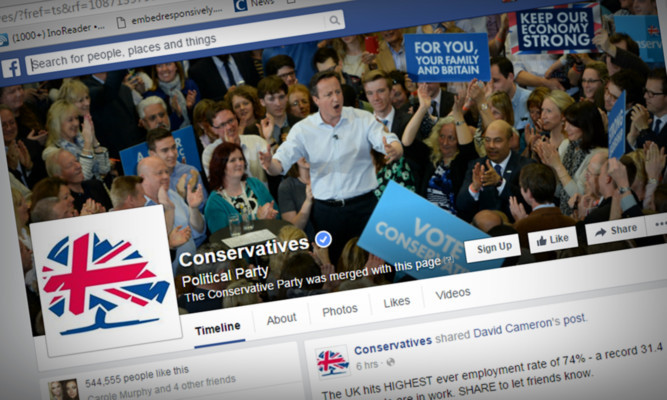The Conservatives spent more than £1.2 million on Facebook advertising during the general election campaign, records have revealed.
Tory spending on the social networking site massively outstripped Labour, which spent just £16,454, documents released by the Electoral Commission show.
A series of invoices set out details of what the Conservatives received for their cash, with bills for campaigns for individual MPs as well as “4040 likes” and “page likes”.
Labour gave Facebook £1,027 on a “tea towel giveaway – website conversations” and £696.59 on “Hell Yes – donations”, a reference to the phrase then Labour leader Ed Miliband used in an interview with presenter Jeremy Paxman in which he declared: “Hell yes, I’m tough enough”.
The company earned £1.37 million from across the political spectrum over the course of the campaign.
Parties are not bound by any rules on advertising spending on social media as long as they report it to the Electoral Commission.
Overall, political campaigns spent a total of almost £40 million on the 2015 general election, the figures revealed.
Biggest spenders were the Conservatives, with £15,587,956, ahead of Labour’s £12,087,340, the Liberal Democrats’ £3,529,106 and Ukip’s £2,851,465, said the Electoral Commission.
The total of £39,023,564 outstripped the £34,463,890 spent on the 2010 campaign by almost £5 million. But 2015 was still cheaper than the record-breaking 2005 campaign when £42 million was lavished on wooing voters.
In all, 57 parties and 23 non-party campaigns spent money on the 2015 election, but only six spent more than £250,000, according to the Electoral Commission figures.
The Scottish National Party reported spending of £1,475,478 and the Greens £1,131,018.
The figures mean the Conservative campaign cost £1.38 for each of the 11.3 million votes they won, while Labour spent £1.29 for each vote, Liberal Democrats £1.46, the SNP £1.01, Greens 98p and Ukip just 73p.
Conservative spending was down on the £16.7 million reported in 2010 and the cost of the Liberal Democrat campaign was cut from almost £4.8 million at the previous poll. But Labour increased spending sharply on the £8 million spent by Gordon Brown in his unsuccessful battle to hold on to power in 2010.
Any political party that stands more than one candidate at the election is required to submit a campaign expenditure return to the commission. Reported spending for parties does not cover some costs such as staffing, and candidate spending is reported separately.
